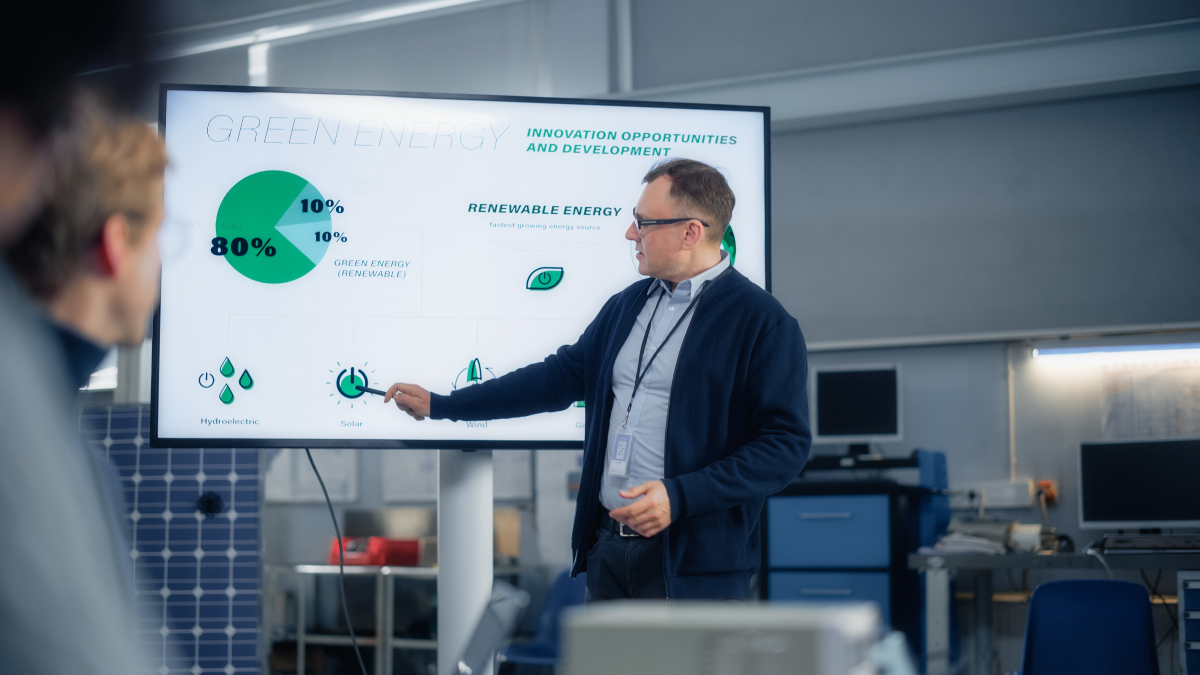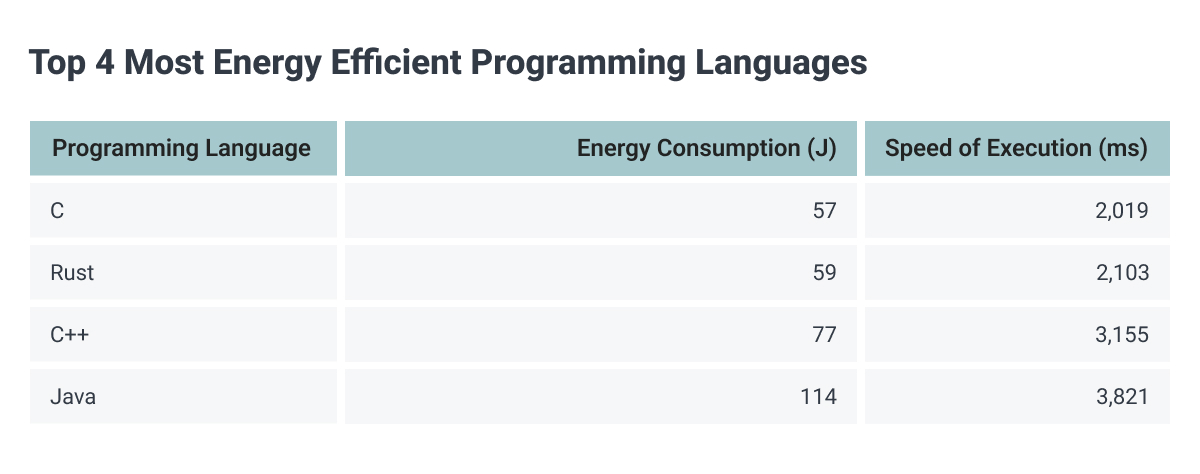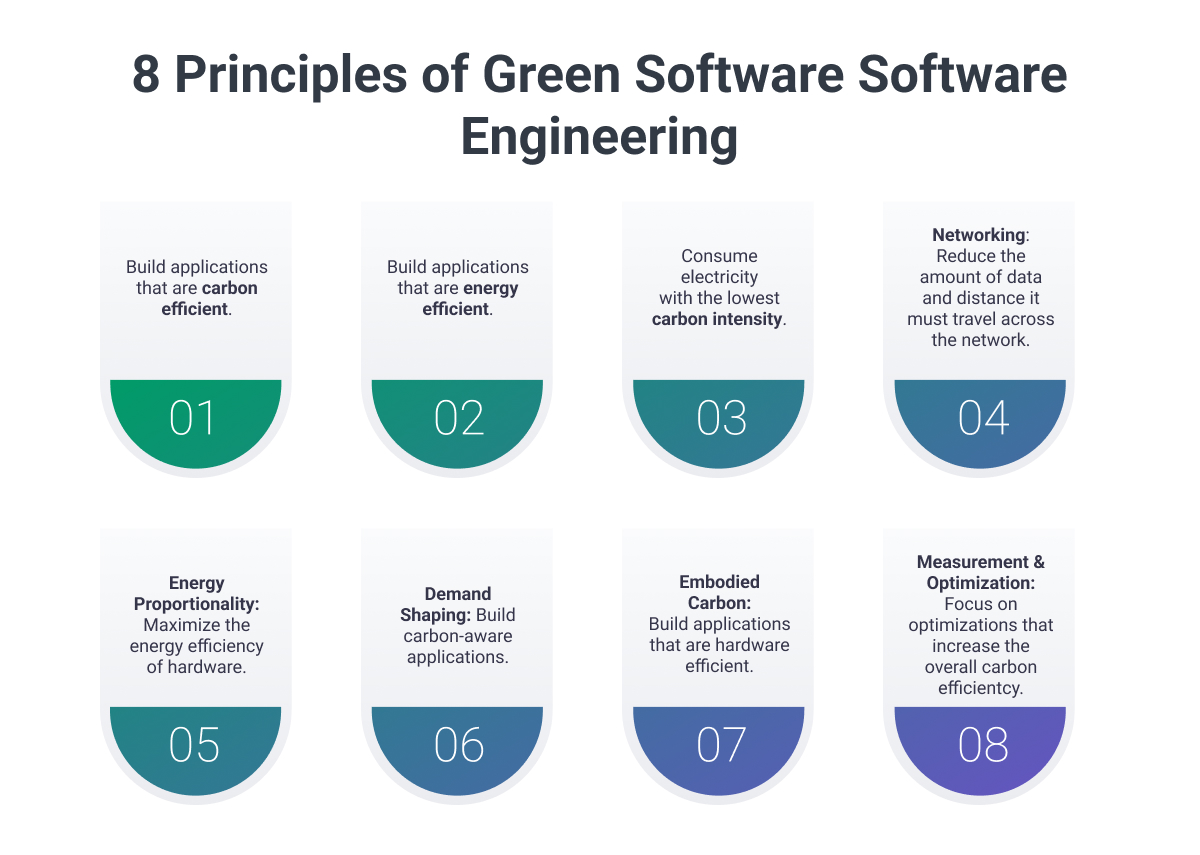With the rapidly advancing world of technology and an IT industry with substantial consumption of resources, the efficiency of programming languages extends beyond execution speed and memory use to encompass environmental impact.
Data centers currently use a remarkable 2% of the world's electricity, and by 2040, the ICT sector could account for 14% of the global carbon footprint, underscoring the urgent need for sustainable practices in technology.
As our digital footprint grows, understanding the energy consumption and sustainability of programming languages becomes crucial. This article delves into why businesses and developers should consider both efficiency and environmental friendliness when choosing their programming tools.

What Makes a Programming Language Efficient and Environmentally Friendly?
Efficiency in programming languages involves more than just fast execution times; it includes effective memory management, minimized hardware requirements, and energy-aware algorithms. Environmentally friendly programming practices optimize resource use and power consumption to reduce the overall carbon footprint. Through eco-friendly design patterns and sustainability metrics, green coding integrates these elements to decrease the environmental impact of software development.
Most Environmentally-Friendly Programming Languages

C/C++: Known for its compilation speed and runtime efficiency, C/C++ consumes minimal memory and processor resources, making it one of the greenest programming options available.
JavaScript: Essential for web development and ubiquitous across development platforms, JavaScript can lead to inefficient code that requires higher resource use if not properly optimized.
Rust: With a focus on memory safety without the use of a garbage collector, Rust offers optimized performance that reduces power usage, making it an increasingly popular choice for energy-efficient applications.
Java: Despite its extensive use and well-optimized Java Virtual Machine (JVM), Java still requires significant energy, particularly in large-scale systems, although recent improvements have helped mitigate its environmental impact.

Least Environmentally Friendly Programming Languages
Programming languages that are less efficient in terms of energy consumption can have a considerable environmental impact:
Python: Despite its popularity and ease of use for developers, Python consumes significantly more energy—up to 45 times more than C++. This high energy usage makes Python a major concern from an environmental standpoint, especially given its widespread adoption in various sectors.
PHP: While commonly used in web development, PHP can be inefficient in its standard deployment scenarios, leading to higher energy consumption.
Ruby: Ruby's developer-friendly syntax comes at the cost of considerable CPU and memory usage, which can strain resources and increase energy consumption.
Perl: As an older technology, Perl may lack the optimizations of newer programming languages, leading to increased demand on system resources and higher energy use.

How Businesses Can Make More Environmentally Friendly Programming Choices
Green coding aligns with and enhances the existing IT sustainability protocols and practices within an organization. Here are sustainability efforts that can be made to create a more efficient and greener practice for your business:
Choosing the Right Programming Languages: Some languages inherently require less computational power, which translates into lower energy consumption. Languages like Rust, C, or C++ are generally more efficient than interpreted languages like Python or Perl. When performance and efficiency are critical, selecting a compiled language can lead to significant energy savings.
Core Energy Efficiency: Applications utilizing multi-core processors can be developed to boost energy efficiency. For instance, programmers can write code that commands processors to shut down and reboot in microseconds, offering a more efficient alternative to standard energy-saving settings.
Microservices: This modern technique involves decomposing complex software into smaller, manageable components known as microservices. These services operate only when required, rather than maintaining a large, continuously running system. This leads to more resource-efficient application performance.
IT Efficiency: Often known as green IT or green computing, this strategy focuses on optimizing resources and consolidating workloads to decrease energy consumption. Utilizing contemporary tools such as virtual machines (VMs) and containers helps minimize the need for extensive physical server setups, thereby reducing both energy use and carbon emissions.
Resource Recycling: In software development, resource recycling can refer to reusing existing code or employing libraries that have been proven to be efficient, rather than writing new, unoptimized code. Utilizing well-supported frameworks and libraries can not only speed up the development process but also enhance the energy efficiency of applications.
Energy-Efficient Design Patterns: Certain design patterns can make applications more efficient and less resource-intensive. For example, using lazy loading can delay the initialization of objects until they are needed, which conserves resources and reduces the initial load on systems.

Continuous Integration and Deployment: Automating the testing and deployment process helps catch inefficiencies early on. Continuous integration systems can run performance tests to ensure that changes in code do not degrade the energy efficiency of applications. Moreover, continuous deployment practices allow for quicker iteration and optimization cycles, enabling developers to implement improvements more rapidly.
Cloud-based Infrastructure: Major cloud providers like Amazon Web Services, Google Cloud, and Microsoft Azure have optimized server usage to minimize power consumption, effectively reducing the carbon footprint through fewer data centers and less energy use.
Cloud computing's scalable nature and strategy of using only necessary resources help avoid the waste typical in traditional IT models, where overprovisioning to prevent capacity issues is common. Expert cloud consulting services can help you plan your move to the cloud.
These adaptations in both structure and culture within IT can drive substantial improvements in sustainability efforts, making green coding a fundamental component of broader organizational sustainability initiatives.

An Eco-Friendly Future of Programming
As the technology sector continues to expand, the environmental impact of programming becomes increasingly significant. By choosing more efficient and environmentally friendly programming languages, and employing green coding practices, businesses can significantly reduce the digital world’s carbon footprint.















